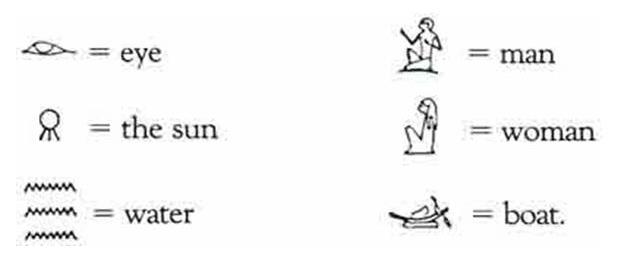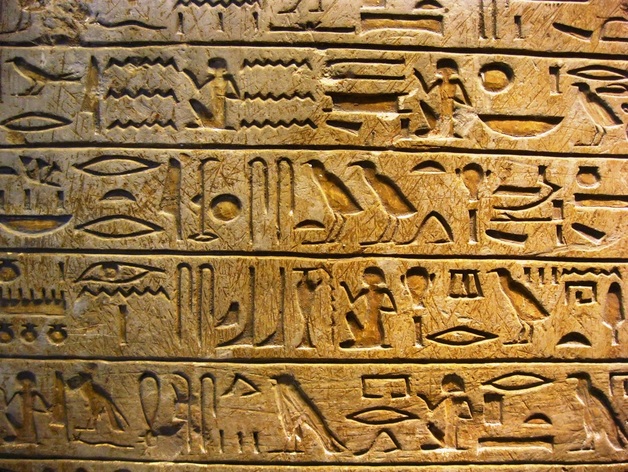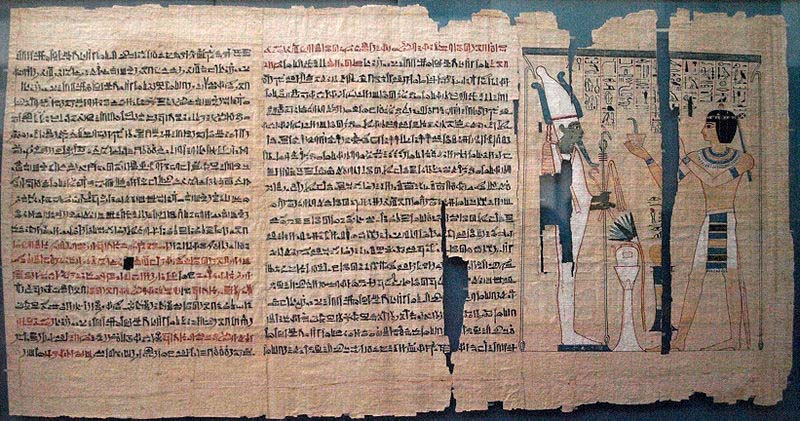Survey 1 Summary
Communication is a familiar concept to many of us in modern day society. The ability to express our interests in many different ways has made communication intriguing and thought provoking. That same idea has been used in many different societies, new and old. Predating back to the Palaeolithic Era and cave drawings, we can look at the roots of communication and how it has changed over the many centuries. A question I frequently thought was “There are so many languages in the world, but it should all come back to one single form of communication.”. Although yes, cave paintings are technically the “very first” way of communicating what was the first written language? The earliest we can dig back go to the Sumerians, and the language “Cuneiform”. By using ideograms on clay the Sumerians were able to communicate as well as make laws to promote peace and order. Another example around the same time are Egyptian Hieroglyphs, which I will go into further detail in my research. I think at the end of the day, learning about different forms of communication and how different languages came to be was eye opening and amazing. Seeing how society functioned in the Palaeolithic era and how they communicated has only piqued my interests further.
Citation: Judy Snaydon’s Handprints and Handwriting (35,000BCE – 0CE) sheet. Sept. 19, 2018.
Egyptian Hieroglyphs
When thinking back to Ancient Egypt we think about Egyptian Hieroglyphics. Hieroglyphics predate all the way back to 3300 BCE. When the language was first developed, there were 3 types of classifications. Phonograms, Logograms, and Determinatives. By using these 3 classifications a hieroglyph was made. The general format of a hieroglyph went as follows: Phonogram, Ideogram, Determinative.

http://cojs.org/you_too_can_read_hieroglyphics-_carey_a-_moore-_bar_11-04-_jul-aug_1985/
The Importance of Phonograms, Ideograms, and Determinatives
These 3 classifications of a Hieroglyph play a essential role in discerning what a specific hieroglyph has to say. Phonograms were used to represent sounds, Ideograms were used to represent a object, and Determinatives were used to classify the Hieroglyph. Using the example of a dog barking, we can break down each specific use of the category.
Phonograms would be used to show that something is making a sound. However because we do not know what is making the sound and where it is, the ideogram illustrates that the sound is coming from a mouth. To further classify this, a determinative is used to show that the sound is coming from the mouth of a animal, in this case it is coming from a dog.
The Different stages of Hieroglyphics
The Ancient Egyptian language can be classified into 3 stages. Ancient Egyptian Hieroglyphics, Hieratic Script, and Demotic Script.
Hieroglyphics

https://ancientegypthistorykingdom.weebly.com/egyptian-writing.html
Egyptian Hieroglyphics were mainly used for the writing of religious/magical texts, documentation of important events, jewelry, as well as being engraved onto the tombstones of the dead. The general idea of having hieroglyphics on tombstones are to help guide the dead to the afterlife. Not many people knew about hieroglyphics as only priests, civil officials, and royalty knew how to read hieroglyphics. As more and more holy texts were written, many new hieroglyphs were created. The use of Hieroglyphics lasted from 3300 BCE to around 400 CE.
Hieratic script
The idea of Hieratic script came to be when priests and royalty started to have a hard time learning Hieroglyphics and they needed a easier way to write. Considering that the writing of hieroglyphics took a long time to make and was hard to learn, the Egyptians needed a answer to their problem. The solution? To create a new writing system to replace the old. Hieratic script is the cursive and simplified form of Hieroglyphs, and was introduced along with Hieroglyphics to help priests and royalty understand the language better. Hieratic script was mainly used to write religious texts and was almost exclusively used by priests. The most famous example of Hieratic script is “The Book of the Dead”, a funerary text about leading the dead to the afterlife. The use of the Hieratic script lasted from 2700 BCE – 2134 BCE, which was replaced by Demotic script.

http://www.crystalinks.com/bookofthedead.html
Demotic Script

http://scriptsource.org/cms/scripts/page.php?item_id=script_detail_use&key=Egyd
Demotic script, unlike hieratic did not come from Hieroglyphics. Instead, Demotic script was mainly used for personal documentation and gained popularity later on in different stages of Demotic which can be classified as Early Demotic, Middle (Ptolemaic Demotic), and Late (Roman Demotic). The script was used mostly for legal documentations, advertisements, and public documentation. Hieratic and Hieroglyphics were still being used however these were mainly reserved for religious texts. During the Middle Demotic age, the popularity of Demotic script had boomed over the years and became the more popular option to write. Finally, during Late Demotic (Roman Demotic) the use of Demotic slowly died down as Greek had slowly crept in, however many texts were still being made. Demotic use lasted from 650 BCE to around 500 AD where the last dated use of Demotic script was recorded.
Sources:
http://www.oxfordartonline.com/groveart/view/10.1093/gao/9781884446054.001.0001/oao-9781884446054-e-7000025075
http://history-world.org/hieroglyphics.htm
https://www.britannica.com/topic/demotic-script
https://www.britannica.com/topic/hieratic-script
https://en.wikipedia.org/wiki/Demotic_(Egyptian)
https://en.wikipedia.org/wiki/Hieratic
https://en.wikipedia.org/wiki/Book_of_the_Dead
Leave a Reply